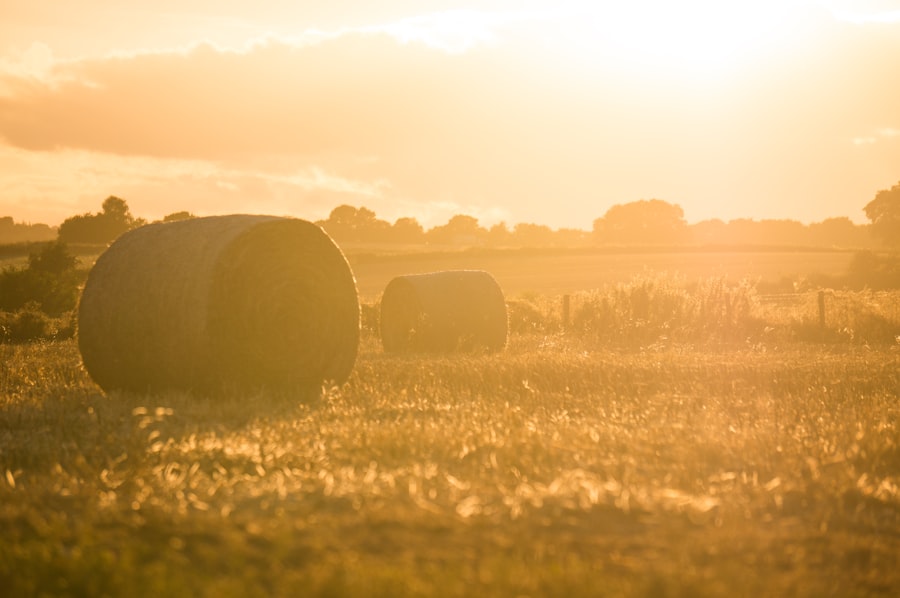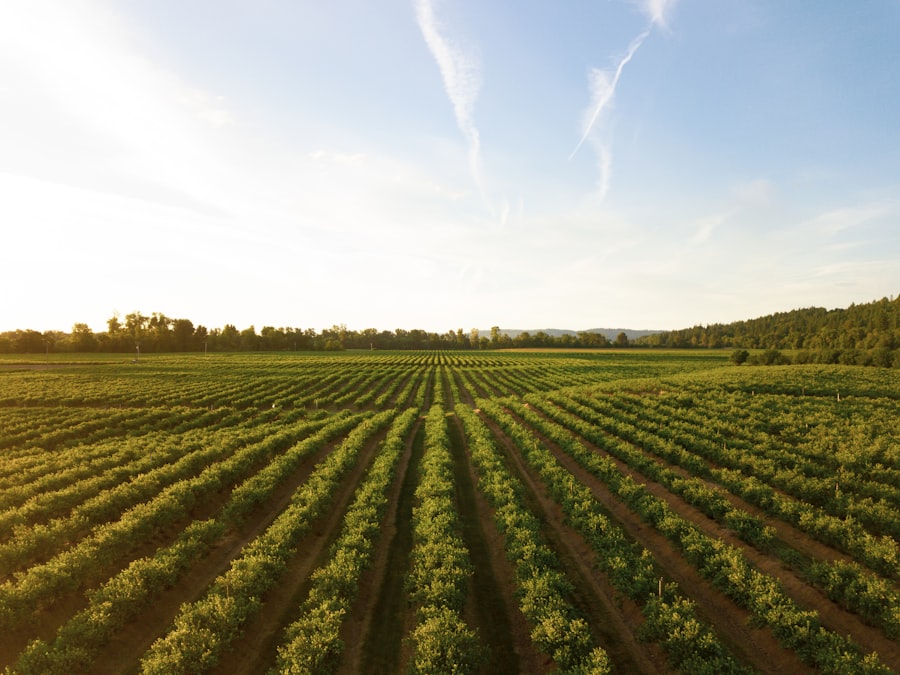In recent years, vertical farming has emerged as a revolutionary approach to agriculture, driven by the need for sustainable food production in an increasingly urbanized world. This innovative method involves growing crops in vertically stacked layers, often integrated into controlled environments such as warehouses or shipping containers. The concept is not entirely new; it has roots in hydroponics and aeroponics, but advancements in technology have propelled it into the mainstream.
As urban populations swell and arable land diminishes, vertical farming presents a viable solution to meet the growing demand for fresh produce. The rise of this technology is also fueled by the increasing awareness of climate change and the environmental impact of traditional farming practices, prompting a shift towards more sustainable agricultural methods. The technological advancements that have facilitated the rise of vertical farming are numerous and varied.
Innovations in LED lighting, climate control systems, and nutrient delivery methods have made it possible to cultivate crops year-round, independent of external weather conditions. Additionally, the integration of data analytics and automation has optimized growth cycles and resource management, allowing for higher yields with lower inputs. As cities continue to expand, the potential for vertical farms to occupy underutilized spaces—such as rooftops, abandoned buildings, and warehouses—has garnered significant interest from entrepreneurs and investors alike.
This convergence of technology, sustainability, and urban development has positioned vertical farming as a key player in the future of food production.
Key Takeaways
- Vertical farming technology is on the rise, revolutionizing the way we grow food in urban environments.
- Advantages of vertical farming include higher crop yields, reduced water usage, and the ability to grow food year-round.
- Vertical farming techniques and methods include hydroponics, aeroponics, and aquaponics, allowing for efficient and controlled growing conditions.
- Sustainability and environmental benefits of vertical farming include reduced carbon footprint, minimal use of pesticides, and the potential for local food production.
- Challenges and limitations of vertical farming include high initial investment costs, energy consumption, and the need for further research and development.
Advantages of Vertical Farming
One of the most significant advantages of vertical farming is its ability to produce food in close proximity to urban centers, thereby reducing transportation costs and carbon emissions associated with traditional agriculture. By growing food where it is consumed, vertical farms can provide fresher produce to city dwellers while minimizing the environmental footprint of food distribution. This localized approach not only enhances food security but also fosters community engagement and awareness about sustainable practices.
Furthermore, vertical farms can operate year-round, ensuring a consistent supply of fresh fruits and vegetables regardless of seasonal fluctuations or adverse weather conditions. Another notable benefit of vertical farming is its efficient use of resources. Traditional agriculture often requires vast amounts of land, water, and fertilizers, leading to significant environmental degradation.
In contrast, vertical farms utilize advanced hydroponic or aeroponic systems that consume up to 90% less water than conventional farming methods. These systems recirculate water and nutrients, minimizing waste and promoting sustainable practices. Additionally, vertical farms can be designed to use renewable energy sources, such as solar or wind power, further reducing their carbon footprint.
The combination of resource efficiency and reduced environmental impact positions vertical farming as a compelling alternative to traditional agricultural practices.
Vertical Farming Techniques and Methods

Vertical farming encompasses a variety of techniques and methods that cater to different crops and operational scales. Hydroponics is one of the most widely used methods, where plants are grown in nutrient-rich water solutions without soil. This technique allows for precise control over nutrient delivery and can lead to faster growth rates and higher yields.
Aeroponics is another innovative method that involves suspending plants in air and misting their roots with nutrient solutions. This technique not only conserves water but also promotes oxygenation, which can enhance plant growth. Both hydroponics and aeroponics are often employed in conjunction with vertical stacking systems to maximize space utilization.
In addition to these methods, vertical farms may also incorporate advanced technologies such as aquaponics, which combines fish farming with plant cultivation. In this system, fish waste provides organic nutrients for the plants, while the plants help filter and purify the water for the fish. This symbiotic relationship creates a closed-loop system that minimizes waste and maximizes resource efficiency.
Furthermore, vertical farms can leverage automation and artificial intelligence to monitor plant health, optimize growth conditions, and streamline operations. By employing these diverse techniques and technologies, vertical farming can adapt to various environments and meet the specific needs of different crops.
Sustainability and Environmental Benefits
The sustainability of vertical farming extends beyond its efficient use of resources; it also encompasses its potential to mitigate some of the most pressing environmental challenges facing agriculture today. Traditional farming practices often lead to soil degradation, deforestation, and loss of biodiversity due to monoculture cropping systems and excessive pesticide use. Vertical farming, on the other hand, minimizes land use by utilizing multi-layered growing systems that can produce significant yields in small footprints.
This approach not only preserves natural ecosystems but also reduces the pressure on arable land that is increasingly being converted for urban development. Moreover, vertical farming has the potential to significantly reduce water consumption compared to conventional agriculture. With traditional farming accounting for approximately 70% of global freshwater use, the need for more efficient water management practices is critical.
Vertical farms utilize closed-loop irrigation systems that recycle water and nutrients, drastically cutting down on waste. Additionally, by eliminating the need for chemical pesticides through controlled environments, vertical farms can contribute to healthier ecosystems and reduce chemical runoff into waterways. The environmental benefits of vertical farming are profound, making it a crucial component in the quest for sustainable food production.
Challenges and Limitations of Vertical Farming
Despite its many advantages, vertical farming is not without its challenges and limitations. One significant hurdle is the high initial capital investment required to establish a vertical farm. The costs associated with building infrastructure, purchasing advanced technology, and maintaining controlled environments can be substantial.
For many entrepreneurs and investors, this financial barrier can be daunting, particularly when compared to traditional farming methods that may require less upfront investment. Additionally, ongoing operational costs—such as energy consumption for lighting and climate control—can further strain profitability if not managed effectively. Another challenge facing vertical farming is the limited crop variety that can be economically produced in these systems.
While leafy greens and herbs thrive in controlled environments, other crops such as grains or root vegetables may not yield sufficient returns on investment due to their larger space requirements or longer growth cycles. This limitation can restrict the diversity of produce available to consumers and may hinder the overall market potential for vertical farms. Furthermore, as the industry grows, competition may intensify among vertical farms, leading to price pressures that could impact profitability.
Addressing these challenges will be crucial for the long-term viability of vertical farming as a mainstream agricultural practice.
Vertical Farming and Urban Agriculture

Vertical farming plays a pivotal role in the broader context of urban agriculture by providing innovative solutions to food production within city limits. As urban areas continue to expand, the demand for locally sourced food has surged, prompting cities to explore alternative agricultural practices that can thrive in densely populated environments. Vertical farms can be seamlessly integrated into urban landscapes—occupying rooftops, repurposing vacant lots, or utilizing underused commercial spaces—thereby transforming urban areas into productive agricultural hubs.
This integration not only enhances food accessibility but also contributes to urban greening efforts that improve air quality and promote biodiversity. Moreover, vertical farming fosters community engagement by encouraging local residents to participate in food production initiatives. Many urban vertical farms offer educational programs that teach individuals about sustainable agriculture practices while providing opportunities for hands-on experience in growing food.
These initiatives can empower communities by promoting self-sufficiency and resilience in food systems while also addressing issues related to food deserts—areas with limited access to fresh produce. By bridging the gap between urban living and agricultural production, vertical farming has the potential to reshape how cities approach food security and sustainability.
Vertical Farming and Food Security
Food security remains one of the most pressing global challenges as populations grow and climate change impacts traditional agricultural practices. Vertical farming offers a promising solution by providing a reliable source of fresh produce that is less susceptible to external shocks such as extreme weather events or supply chain disruptions. By decentralizing food production through localized vertical farms, cities can enhance their resilience against food shortages while ensuring that residents have access to nutritious options year-round.
This localized approach not only addresses immediate food needs but also contributes to long-term sustainability by reducing reliance on distant agricultural regions. Furthermore, vertical farming can play a crucial role in addressing nutritional disparities within urban populations. Many low-income neighborhoods lack access to fresh fruits and vegetables due to limited grocery options or high prices associated with transportation costs from rural areas.
By establishing vertical farms within these communities, it becomes possible to provide affordable produce directly to residents while simultaneously creating job opportunities in agriculture-related fields. This dual benefit not only improves food security but also promotes economic development within underserved areas—ultimately contributing to healthier communities.
The Future of Vertical Farming Technology
As we look toward the future of vertical farming technology, several trends are poised to shape its evolution in the coming years. One significant trend is the increasing integration of artificial intelligence (AI) and machine learning into vertical farm operations. These technologies can optimize growth conditions by analyzing data on plant health, environmental factors, and resource usage—allowing farmers to make informed decisions that enhance productivity while minimizing waste.
As AI continues to advance, it will likely play an even more critical role in automating processes such as planting, harvesting, and monitoring crop health. Additionally, advancements in biotechnology may lead to the development of new crop varieties specifically suited for vertical farming environments. By leveraging genetic engineering techniques or traditional breeding methods, researchers could create plants that grow faster or require fewer resources—further enhancing the efficiency of vertical farms.
As consumer preferences shift toward organic and sustainably produced foods, vertical farms will need to adapt by incorporating these principles into their operations while maintaining profitability. The future of vertical farming technology holds immense potential for transforming how we produce food—ultimately contributing to a more sustainable and resilient global food system.
In exploring sustainable agricultural practices, it’s essential to consider how technology can enhance productivity and sustainability. A related article that delves into the impact of emerging technologies on various sectors, including agriculture, can be found at Wired.com. This article, highlighted on Enicomp’s website, discusses how innovations are shaping industries by making them more efficient and environmentally friendly. For those interested in understanding how technological advancements intersect with sustainable farming practices like vertical farming, this article provides valuable insights. You can read more about it here.
FAQs
What is vertical farming technology?
Vertical farming technology is a method of growing crops in vertically stacked layers, often in controlled environments such as warehouses or skyscrapers. This technology utilizes techniques such as hydroponics, aeroponics, and aquaponics to efficiently produce food in urban areas.
How does vertical farming technology work?
Vertical farming technology works by using artificial lighting, climate control, and nutrient delivery systems to create optimal growing conditions for crops. This allows for year-round production and higher crop yields compared to traditional farming methods.
What are the benefits of vertical farming technology?
Some benefits of vertical farming technology include reduced water usage, minimal use of pesticides, and the ability to grow food in urban areas closer to the point of consumption. It also has the potential to reduce the environmental impact of traditional agriculture and increase food security.
What types of crops can be grown using vertical farming technology?
A wide variety of crops can be grown using vertical farming technology, including leafy greens, herbs, tomatoes, strawberries, and even certain root vegetables. However, some crops may be more suitable for vertical farming than others due to space and light requirements.
What are the challenges of vertical farming technology?
Challenges of vertical farming technology include high initial investment costs, energy consumption for artificial lighting and climate control, and the need for specialized knowledge and skills to operate the technology effectively. Additionally, the scalability and profitability of vertical farming are still being explored.

